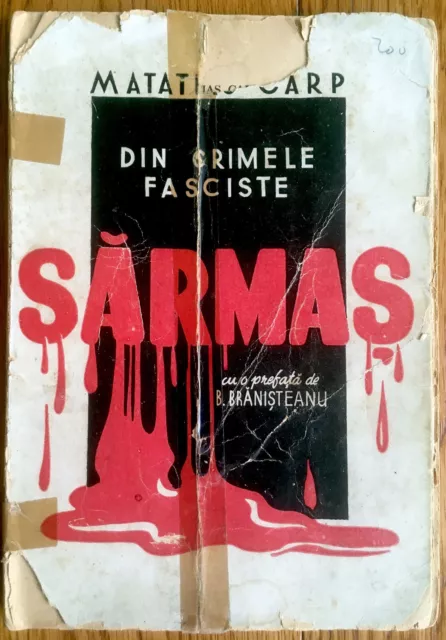1945 Romania SARMAS MASSACRE Jewish HOLOCAUST BOOK Photos JUDAICA Nazi HORRORS
DESCRIPITION : Up for auction is a horrible HOLOCAUST related publication , Being the ORIGINAL Romanian book with PHOTOS , The only testimony regarding the SARMAS ( SARMASU ) Massacre in ROMANIA . The book " Sarmas - Una Din Cele Mail Oribile Crime Fasciste " ( " Sarmas - One Of The Most Horrible Of Fascist Crimes" ) was written in Romanian by Carp Matatias and published in BUCHAREST 1945 ( First and only edition ). Including testimonies, The list of victims and quite a few PHOTOS of the VICTIMS and LOCATION. Ultra rare. Estimated price $400-$600. The book is EXTREMELY RARE and SOUGHT AFTER. Very rare original publisher ILLUSTRATED wrappers ( Damaged ) . 7 x 10 " . 48 PP + chromo photo plates . Condition : The original wrappers are damaged and fragile. The inner condition is very good. Tightly bound. Age tanning of paper leaves . Quite clean. ( Pls look at scan for accurate AS IS images ) . For extra $35 I can bind the book AS IS with new wrappers using a color reproduction of intact wrapper taken from the internet ( Shown hereabove ) . Book will be sent extremely well packed inside a protective rigid packaging .
AUTHENTICITY : This is the ORIGINAL vintage 1945 FIRST and ONLY edition ( Dated ), NOT a recent edition or a reprint , It holds a life long GUARANTEE for its AUTHENTICITY and ORIGINALITY.
PAYMENTS : Payment method accepted : Paypal & All credit cards. SHIPPMENT : Shipp worldwide via registered mail is $29 .Book will be sent extremely well packed inside a protective rigid packaging . Handling around 5-10 days after payment.
Sărmașu massacre refers to the torture and massacre of 165 people, primarily Jews, committed by Hungarian paramilitaries in Sărmașu, Cluj-Turda County.[1] After Romania left the Axis Powers and joined the Allies during World War II, between 5 September and 10 October 1944, Sărmașu came under the occupation of the Nazi-aligned Hungarian troops. During this period, Hungarian gendarmes and members of the Hungarian National Guard, led by captain of gendarmes Lánczos László, killed 126 local Jews (out of 142 who were living in the city at the time),[2] as well as 39 Romanians, the latter primarily prisoners of war captured in the battles on the alignment of Oarba de Mureș–Luduș–Gheja–Chețani,[3] during the Battle of Turda. Contents 1 The massacre 2 Sentence of People's Tribunal in Cluj 3 See also 4 References 5 External links The massacre[edit] Cemetery of Jews killed by Horthysts in Sărmașu Hungarian population in the area, who supported the cause of Hungary, in the desire to regain the whole of Transylvania, started, along with the Hungarian Guard, to loot houses of Jews and Romanians. On 9 September 1944, a team of Hungarian gendarmes took up from their homes several Romanians that had important functions in the administration of the commune. These people were taken to an improvised camp in Sărmașu and were tortured for several days. According to the sentence handed down on 28 June 1946 by the People's Tribunal in Cluj, "in the camp was applied an inhumane treatment, consisting of beatings, ill-treatments and executions staged at night. For example, once all Romanians were removed from the camp in the yard, put on their knees («At the church»), and, after this exercise, everyone, regardless of age, was forced to overturn until exhaustion". In the afternoon of 16 September, those 126 Jews in the improvised camp were transported with carriages to a place called Suscut, and in the night of 16/17 September were killed by Hungarian gendarmes and soldiers. The bodies of those killed (31 adult males, 52 adult females and 43 children up to age 15) were exhumed from two mass graves in February 1945.[4] The conclusion reached by the Medico-legal commission who conducted the autopsy of the cadavers was violent death by shooting, and, in the case of several children, violent death by asphyxiation, those ones being buried alive.[1] On 15 September 1944, some Romanians were released, and 18 others were deported to Hungary. They were taken by truck to Cluj, where they were rounded up and forced to march, escorted by civilian police, on the way to Jibou and then to Budapest. One of the deported and declared dead was Iuliu Moldovan, father of actor Ovidiu Iuliu Moldovan. Likewise, father Micu, a priest almost 80 years old, was killed. The number of all Romanians deported who lost their lives is not known exactly.[5] Sentence of People's Tribunal in Cluj[edit] Investigations against those responsible for the massacres of Sărmașu and Luduș started in 1945 and ended in 1946. By sentence of the Cluj Tribunal was established the responsibility for the Sărmașu massacre: two officers of the gendarmerie troops (captain Láncz László, lieutenant Vecsey) and five NCOs (second lieutenant Halasz, second lieutenant Fekete, sergeant major Szabo, sergeant Horváth István, and sergeant Polgár) were found guilty and were sentenced to death. Two locals were sentenced to imprisonment for participation in the massacre: János Pánczél (soldier-gendarme from Sărmașu) and István Soós (member of the Hungarian Civil Guard in Sărmașu) were sentenced to 20 years and 5 years in prison.[6] See also[edit] Ip massacre Luduș massacre Treznea massacre List of massacres in Romania ***** Sarmas, located in Transylvania along the Hungarian border, had a Jewish population of only 126 in 1944. When the Hungarian Army occupied Sarmas on 5 September 1944, the population of the town pillaged all the Romanian and Jewish homes in Sarmas. On September 8th, the Jews were ordered to mark their homes with a yellow Star of David, whereafter they were rounded-up by Hungarian peasants from the town. The Jews were taken to the courtyard of a Romanian construction foreman, beaten severely, and then forced to work. On September 16th, 20 Jewish men were selected to dig mass graves. That evening, the 126 Jews of Sarmas were killed and buried. **** The history of the Jews in Romania concerns the Jews both of Romania and of Romanian origins, from their first mention on what is present-day Romanian territory. Minimal until the 18th century, the size of the Jewish population increased after around 1850, and more especially after the establishment of Greater Romania in the aftermath of World War I. A diverse community, albeit an overwhelmingly urban one, Jews were a target of religious persecution and racism in Romanian society – from the late-19th century debate over the "Jewish Question" and the Jewish residents' right to citizenship, to the genocide carried out in the lands of Romania as part of the Holocaust. The latter, coupled with successive waves of aliyah, has accounted for a dramatic decrease in the overall size of Romania's present-day Jewish community. Jewish communities existed in Romanian territory in the 2nd century AD, after Roman annexation of Dacia in 106 AD. During the reign of Peter the Lame (1574–1579) the Jews of Moldavia, mainly traders from Poland who were competing with locals, were taxed and ultimately expelled.[5] The authorities decided in 1650 and 1741 that Jews have to wear clothing evidencing their status and ethnicity.[6] The first blood libel in Moldavia (and, as such, in Romania) was made in 1710, when the Jews of Târgu Neamț were charged with having killed a Christian child for ritual purposes.[7] An anti-Jewish riot occurred in Bucharest in the 1760s.[8] During the Russo-Turkish War, 1768-1774, the Jews in the Danubian Principalities had to endure great hardships. Massacres and pillages were perpetrated in almost every town and village in the country. During the Greek War of Independence, which signalled the Wallachian uprising of 1821, Jews were victims of pogroms and persecutions. In the 1860s, there was another riot motivated by blood libel accusations.[9] Antisemitism was officially enforced under the premierships of Ion Brătianu. During his first years in office (1875) Brătianu reinforced and applied old discrimination laws, insisting that Jews were not allowed to settle in the countryside (and relocating those that had done so), while declaring many Jewish urban inhabitants to be vagrants and expelling them from the country. The emigration[dubious – discuss] of Romanian Jews on a larger scale commenced soon after 1878. By 1900 there were 250,000 Romanian Jews: 3.3% of the population, 14.6% of the city dwellers, 32% of the Moldavian urban population and 42% of Iași.[10] Between the establishment of the National Legionary State (September 1940) and 1942, 80 anti-Jewish regulations were passed. Starting at the end of October, 1940, the Romanian fascist movement known as the Iron Guard began a massive antisemitic campaign, torturing and beating Jews and looting their shops (see Dorohoi Pogrom), culminating in the failed coup accompanied by a pogrom in Bucharest, in which 125 Jews were killed.[11] Military dictator Ion Antonescu eventually stopped the violence and chaos created by the Iron Guard by brutally suppressing the rebellion, but continued the policy of oppression and massacre of Jews, and, to a lesser extent, of Roma. After Romania entered the war at the start of Operation Barbarossa, atrocities against Jews became common, starting with the Iași pogrom. According to the Wiesel Commission report released by the Romanian government in 2004, between 280,000 and 380,000 Jews were murdered in the Holocaust in Romania and the occupied Soviet territories under Romanian control, among them the Transnistria Governorate. An additional 135,000 Jews living under Hungarian control in Northern Transylvania also were murdered in the Holocaust, as did some 5,000 Romanian Jews in other countries.[12][13] On the current territory of Romania, between 290,000 and 360,000 Romanian Jews survived World War II (355,972 persons, according to statistics from the end of the war).[14] During the communist regime in Romania, there was a mass emigration to Israel, and in 1987, only 23,000 Jews lived in Romania. Today, the majority of Romanian Jews live in Israel, while modern-day Romania continues to host a modest Jewish population. In the 2011 census, 3,271 declared to be Jewish. The Holocaust[edit] It has been suggested that this section be split out into another article titled The Holocaust in Romania. (Discuss) (May 2021) The Iron Guard[edit] Victims of the Iași pogrom Memorial for the Jewish martyrs of Fălticeni Between the establishment of the National Legionary State and 1942, 80 anti-Jewish regulations were passed. Starting at the end of October, 1940, the Iron Guard began a massive antisemitic campaign, torturing and beating Jews and looting their shops (see Dorohoi Pogrom), culminating in the failed coup and a pogrom in Bucharest, in which 120 Jews were killed.[11] Antonescu eventually stopped the violence and chaos created by the Iron Guard by brutally suppressing the rebellion, but continued the policy of oppression and massacre of Jews, and, to a lesser extent, of Roma. Antonescu's régime[edit] Main article: Ion Antonescu § Antonescu and the Holocaust After Romania entered the war at the start of Operation Barbarossa atrocities against the Jews became common, starting with the Iași pogrom – on June 27, 1941, Romanian dictator Ion Antonescu telephoned Col. Constantin Lupu, commander of the Iași garrison, telling him formally to "cleanse Iași of its Jewish population", though plans for the pogrom had been laid even earlier – 13,266 Jews, according to Romanian authorities, were killed in July 1941. In July–August 1941, the yellow badge was imposed by local initiatives in several cities (Iași, Bacău, Cernăuți). A similar measure imposed by the national government lasted only five days (between September 3 and September 8, 1941), before being annulled on Antonescu's order.[64] However, on local initiative, the badge was still worn especially in the towns of Moldavia, Bessarabia and Bukovina (Bacău, Iași, Câmpulung, Botoșani, Cernăuți, etc.).[65] Victims of Iași Pogrom Monument In 1941, following the advancing Romanian Army during Operation Barbarossa, and, according to Antonescu propaganda, alleged attacks by Jews, who were considered en masse "Communist agents" by the official propaganda, Antonescu ordered the deportation to Transnistria, of all Jews of Bessarabia and Bukovina. "Deportation" however was a euphemism, as part of the process involved mass killing of Jews before deporting the rest in the "trains of death" (in reality long exhausting marches on foot) to the East. It is estimated that, in July–September 1941, the number of Jews killed, in Bukovina and Bessarabia, by the Romanian Army and the Romanian Gendarmerie in cooperation with the German Army and the Einsatzgruppen, is more than 45,000 people but probably closer to 60,000.[13] Of those who escaped the initial ethnic cleansing in Bukovina and Bessarabia, only very few managed to survive "trains" and the concentration camps set up in the Transnistria Governorate. In 1941–1942, the total number of deportees from Bessarabia, Bukovina, Dorohoi and the Regat was between 154,449 and 170,737 people.[13] Further killings perpetrated by Antonescu's death squads (documents prove his direct orders[citation needed]) in collaboration with the German Einsatzkommando, the SS squads of local Ukrainian Germans (Sonderkommando Russland and Selbstschutz), and the Ukrainian militia targeted the local Jewish population that the Romanian Army managed to round up when occupying Transnistria. Over one hundred thousand of these were killed in massacres staged in such places as Odessa (see Odessa massacre), Bogdanovka, Akmechetka, Pechora in 1941 and 1942. Antonescu's government also made plans for mass deportations of the Romanian Jews community from the rest of the country (the Regat and southern Transylvania), numbering 292,149 people (according to a May 1942 census), to Transnistria region, or, in collaboration with the German government, to the Belzec extermination camp, but these had never been carried out.[13] The change in policy toward the Jews began in October 1942, and by March–April 1943, Antonescu permanently stopped all deportations despite German pressure,[66] as he began to seek peace with the Allies, although at the same time he levied heavy taxes and forced labor on the remaining Jewish communities. Also, sometimes with the encouragement of Antonescu's regime, thirteen boats left Romania for the British Mandate of Palestine during the war, carrying 13,000 Jews (two of these ships were sunk by the Soviets (see Struma disaster), and the effort was discontinued after German pressure was applied). Discussions regarding the repatriation of deported Jews followed, and in January 1943, the leader of the Romanian-Jewish community Wilhelm Filderman began talks with the Romanian government in order to start repatriating Romanian Jews deported to Transnistria. On November 15, 1943, an official report of the Romanian government indicated that 49,927 Romanian Jews were alive in Transnistria (of which 6,425 were originally from the Regat). In December 1943, partial repatriation began, and in March 1944, Antonescu government ordered general repatriation for all Romanian Jews deportees from Transnistria. Between December 20, 1943 and March 30, 1944, almost 11,000 people (including orphans) were repatriated from different camps and ghettos in Transnistria. However, the decision came too late to organize the repatriation of the last large number of deportees, and the fate of tens of thousands of deportees remaining in Transnistria became unknown.[13] Results[edit] Historical and political situations have determined the destinies of the Romanian Jews in different ways, depending on the regions in which they were living, and proximity to the front being the most important variable.[13] The total number of deaths is not certain, but even the lowest respectable estimates run to about 250,000 Jews (plus 25,000 deported Romani, of which approximately 11,000 were murdered).[13] According to the Wiesel Commission report released by the Romanian government in 2004, between 280,000 and 380,000 Jews were murdered or died in various forms on Romanian soil, in the war zones of Bessarabia, Bukovina, and in the occupied Soviet territories under Romanian's control (Transnistria Governorate).[12][13] At least 15,000 Jews from the Regat were murdered in the Iași pogrom and as a result of other anti-Jewish measures. Half of the estimated 270,000 to 320,000 Jews living in Bessarabia, Bukovina, and the former Dorohoi County in Romania were murdered or died between June 1941 and November 1943. Between 45,000 and 60,000 Jews were killed in Bessarabia and Bukovina by Romanian and German troops in 1941. Between 104,522 and 120,810 deported Romanian Jews died as a result of the expulsions to Transnistria. After a wave of random initial killings, Jews in Moldavia were subject to pogroms, while those in Bessarabia, Bukovina and Dorohoi were concentrated into ghettos from which they were deported to concentration camps in the Transnistria Governorate, including camps built and run by Romanians. Romanian soldiers and gendarmes also worked with the German Einsatzkommando, the Ukrainian militia, and the SS squads of local Ukrainian Germans to massacre Jews in conquered territories east of the Romania's 1940 border. In Transnistria, between 115,000 and 180,000 indigenous Ukrainian Jews were murdered, especially in Odessa and the counties of Golta and Berezovka.[13] At the same time, 135,000 Jews living under Hungarian control in Northern Transylvania were deported to and died in concentration and extermination camps. In addition, 5,000 Romanian Jews were murdered in the Holocaust in other countries.[13] A majority of the Romanian Jews living within the 1940 borders did survive the war. The change in the Romanian government policy during 1942-1943 led to the survival of at least 290,000 Romanian Jews (although they were subject to a wide range of harsh conditions, including forced labor, financial penalties, and discriminatory laws), and to the subsequent repatriation of thousands of people. Also, thousands of Romanian Jews living abroad were able to survive thanks to renewed Romanian diplomatic protection. However, the total number of victims makes Romania count as first, according to the Wiesel Commission, "Of all the allies of Nazi Germany, [responsible] for the deaths of more Jews than any country other than Germany itself".[13] During the postwar period, the history of the Holocaust was distorted or simply ignored by East European communist regimes. The trials of war criminals began in 1945 and continued until the early 1950s, but they received public attention only for a short period of time.[13] In postcommunist Romania, Holocaust denial has been a diffuse phenomenon, and until 2004, when researchers made numerous documents publicly available, many in Romania denied knowledge that their country participated in the Holocaust.[67] The Romanian government has recognized that a Holocaust took place on its territory and held its first Holocaust Day in 2004.[68] In memory of the victims of the Holocaust and particularly to reflecting on Romania's role in the Holocaust, the Romanian government decided to make October 9 the National Day of Commemorating the Holocaust. Holocaust denial in Romania[edit] Main article: Holocaust denial Decades after the Holocaust, especially during the Communist era in Romania, educating and learning about the Holocaust was considered taboo. Textbooks did mention the Holocaust in passing, but it failed to acknowledge the role of the Romanian government in the systematic murder of the Jewish and Romani people. Until today, Holocaust denial is still prevalent in Romanian society.[citation needed] During the Communist era from 1945 to 1989, the government influenced every part of society, including history education. When World War Two was mentioned, textbooks said that Romania was fighting against Hitler, and when the textbooks mentioned that Romania collaborated with the Nazis, it says that Romania actually lost their national independence and was occupied by Germany not that they willingly helped the Nazis and supported them. When the textbooks mentioned the killings of the Jewish people, which was not common during the time since any mention of the Holocaust was ignored and omitted, they were glossed, diminished, or distorted. When the Holocaust was mentioned, it was painted as just another broader casualty of the War in short passing and hid ant responsibility of the nation while mentioning Romania's exceptional standing in Europe. Instead, the textbooks painted the Communists as the main victim of the Nazis.[citation needed] Holocaust education took a long time to be implemented in post-Communist Romania. Democratization in Romania started in December 1989, but it took 10 years, until 1999, for Holocaust education to be raised as an issue and for a law to pass. Although Holocaust education was accepted in 1999, it took months for the government to solidify their curriculum to show the atrocities of the Holocaust and their role in it.[69] As of 2021, Romania has made strides to rid itself from the past of Holocaust denial. It has joined the International Holocaust Remembrance alliance in 2004, and took over chairmanship in 2016, as well as constantly organizing and sponsoring events surrounding Holocaust education.[70] In 2021, the first sentence over Holocaust denial was made in the country. The accused was Vasile Zărnescu, a former Romanian Intelligence Service (SRI) member who published several articles and a book against the veracity of the Holocaust.[71] Post-War[edit] See also: Romanian Jews in Israel According to the Wiesel Commission, "... at least 290,000 Romanian Jews survived". Howard M. Sachar estimated that 360,000 Romanian Jews were still alive at the end of World War II. According to statistics from the end of the war, 355,972 Romanian Jews lived on the territory of Romania.[14] Mass emigration to Israel ensued (see Bricha and Aliyah). According to Sachar, for the first two post-war years, tens of thousands of Romanian Jews left for Mandatory Palestine; the Romanian government did not try to stop them, especially due to its desire to reduce its historically suspect and now impoverished Jewish minority. Afterwards, Jewish emigration began to encounter obstacles. In 1948, the year of Israeli independence, Zionism came under renewed suspicion, and the government began a campaign of liquidation against Zionist funds and training farms. However, emigration was not completely banned; Romanian Foreign Minister Ana Pauker, herself a Jew with a father and brother in Israel, negotiated an agreement with Israeli ambassador Reuven Rubin, who himself was a Romanian Jewish immigrant to Israel, under which the Romanian government would allow 4,000 Jews a month to emigrate to Israel; this decision was at least partially influenced by a large Jewish Agency bribe to the Romanian government. This agreement applied mainly to ruined businessmen and other economically "redundant" Jews. Around this time, Israel also secured another agreement with the Romanian government, under which Romania issued 100,000 exit visas for Jews and Israel supplied Romania with oil drills and pipes to aid the struggling Romanian oil industry.[72] By December 1951, about 115,000 Romanian Jews had emigrated to Israel.[73] During the period of transition towards a communist regime in Romania, following Soviet occupation (see Soviet occupation of Romania), Jewish society and culture were subject to the same increasingly tight control by the authorities. The community leader Wilhelm Filderman had been arrested already in 1945 and had to flee the country in 1948.[74] Antonescu, after a brief detention in the Soviet Union, was shot in June 1946 for war crimes. On April 22, 1946, Gheorghe Gheorghiu-Dej attended a meeting of Jewish organizations and called for the creation of a new body, the Jewish Democratic Committee, which was in reality a section of the Romanian Communist Party PCR.[75] After the proclamation of the People's Republic of Romania on December 30, 1947, the government formed by the PCR outlawed all Jewish organizations at a meeting on June 10–June 11, 1948, stating that "the party must take a stand on every question concerning the Jews of Romania and fight vigorously against reactionary nationalist Jewish currents (that is, Zionism)". Between 1952 and 1953 the Stalinist antisemitic charges of "rootless cosmopolitanism" brought about the purging of the party's own leadership (including Jewish ex-premier and foreign minister Ana Pauker);[76] the charges were then inflicted upon the larger part of the Jewish community, beginning with a trial engineered by Iosif Chișinevschi.[77] Jews who were perceived as Zionists were given harsh labour sentences in communist prisons such as Pitești (where they were subject to torture and brainwashing experiments; a few of them died in detention).[74] The 1952 trial of the engineers made responsible for the failure of the Danube-Black Sea Canal project also involved allegations of Zionism (notably aimed at Aurel Rozei-Rozenberg, who was eventually executed).[78] During the Cold War, Romania was the only communist country not to break its diplomatic relations with Israel.[79] Throughout the period of Communist rule, Romania allowed limited numbers of Jews to emigrate to Israel, in exchange for much-needed Israeli economic aid. By 1965, Israel was funding agricultural and industrial projects throughout Romania, and in exchange, Romania allowed a trickle of Jewish emigration to Israel. When Nicolae Ceaușescu came to power in 1965, he initially ended the trade in deference to the Eastern bloc's Arab allies. However, Romania was the only Warsaw Pact nation not to break diplomatic relations with Israel after the Six-Day War of 1967,[79] and by 1969, Ceaușescu decided to exchange Jews for cash from Israel. He wanted economic independence from the Soviet Union, which was content to keep Romania a backwater and as nothing more than a supplier of raw materials, but to fund economic projects, he needed hard cash. As a result, from then until the Ceaușescu regime fell in 1989, about 1,500 Jews a year were granted exit visas to Israel in exchange for a payment of cash for every Jew allowed to leave, in addition to other Israeli aid. The exact payments were determined by the age, education, profession, employment, and family status of the emigrant. Israel paid a minimum of $2,000 per head for every emigrant, and paid prices in the range of $25,000 for doctors or scientists. In addition to these payments, Israel also secured loans for Romania and paid off the interest itself, and supplied the Romanian Army with military equipment.[72][80] Jews in Romania (2002 census) As a result of aliyah, the Romanian-Jewish community was gradually depleted. By 1987, just 23,000 Jews were left in Romania, half of whom were over 65 years old.[81] Romanian Jews became in the 1980s Israel's second largest ethnic community, outnumbered only by the Moroccans.[79] Nevertheless, Romania still has a small Jewish community with some active synagogues, and the oldest uninterrupted Yiddish-language theater in the world.[82] With the fall of communism in Romania, Jewish cultural, social, and religious life has been undergoing a revival. Acts of antisemitism, such destruction of cemetery gravestones, continue to take place, but they are very rare.[83] In 2016, the Romanian Jewish population was estimated as ranging between 9,300 and 17,000.[84] There are also 3,000 Israeli-born people living in Romania.[85] In Romania there is also a small number of Jewish immigrants from the other parts of the world.[86] Every year, tens of Romanian Jewish families from Israel return to their native country.[87] Hasidic Judaism and Haredi Judaism are also present in the country. Chabad has the Yeshua Tova Synagogue, a kosher restaurant, a Jewish kindergarten, a Jewish school and a youth organization, all of them located in Bucharest.[88][89][90][91] The group also has 2 community centers: one in Voluntari and one in Cluj.[92] Satmar also has plans to build a community in Romania. As of 2020, a synagogue, a hotel, a kosher restaurant and a Jewish school are under construction in Sighetu Marmației, al of them under Aaron Teitelbaum's organization.[93] As of 2021, there is also a project to build a rabbinical seminary in Oradea.[94] The Federation of the Jewish Communities in Romania Party has one seat in the Chamber of Deputies, the lower house of the Romanian Parliament. Carp, Matatias. Sarmas - Una Din Cele Mail Oribile Crime Fasciste [“Sarmas - One Of The Most Horrible Of Fascist Crimes.”] FIRST EDITION. Text in Romanian. Photographic illustrations and lists of victims. Title-pape with inscription signed by the author: "To Moise Leivandman, the secretary of Jewish sufferings in Transnistria. With thoughts of good friendship. From the general secretary of Jewish suffering in Romania. 8.v.945” [VE Day]. pp. 47. Original color pictorial stiff wrapers. 4to. Bucharest: 1945 Est: $400 - $600 PRICE REALIZED $350 **** The Holocaust, also known as the Shoah,[b] was the genocide of European Jews during World War II.[3] Between 1941 and 1945, Nazi Germany and its collaborators systematically murdered some six million Jews across German-occupied Europe,[a] around two-thirds of Europe's Jewish population.[c] The murders were carried out in pogroms and mass shootings; by a policy of extermination through labor in concentration camps; and in gas chambers and gas vans in German extermination camps, chiefly Auschwitz-Birkenau, Bełżec, Chełmno, Majdanek, Sobibór, and Treblinka in occupied Poland.[5] Germany implemented the persecution in stages. Following Adolf Hitler's appointment as chancellor on 30 January 1933, the regime built a network of concentration camps in Germany for political opponents and those deemed "undesirable", starting with Dachau on 22 March 1933.[6] After the passing of the Enabling Act on 24 March,[7] which gave Hitler plenary powers, the government began isolating Jews from civil society; this included boycotting Jewish businesses in April 1933 and enacting the Nuremberg Laws in September 1935. On 9–10 November 1938, eight months after Germany annexed Austria, Jewish businesses and other buildings were ransacked or set on fire throughout Germany and Austria on what became known as Kristallnacht (the "Night of Broken Glass"). After Germany invaded Poland in September 1939, triggering World War II, the regime set up ghettos to segregate Jews. Eventually, thousands of camps and other detention sites were established across German-occupied Europe. The segregation of Jews in ghettos culminated in the policy of extermination the Nazis called the Final Solution to the Jewish Question, discussed by senior government officials at the Wannsee Conference in Berlin in January 1942. As German forces captured territories in the East, all anti-Jewish measures were radicalized. Under the coordination of the SS, with directions from the highest leadership of the Nazi Party, killings were committed within Germany itself, throughout occupied Europe, and within territories controlled by Germany's allies. Paramilitary death squads called Einsatzgruppen, in cooperation with the German Army and local collaborators, murdered around 1.3 million Jews in mass shootings and pogroms from the summer of 1941. By mid-1942, victims were being deported from ghettos across Europe in sealed freight trains to extermination camps where, if they survived the journey, they were gassed, worked or beaten to death, or killed by disease, medical experiments, or during death marches. The killing continued until the end of World War II in Europe in May 1945. The European Jews were targeted for extermination as part of a larger event during the Holocaust era (1933–1945),[8] in which Germany and its collaborators persecuted and murdered millions of others, including ethnic Poles, Soviet civilians and prisoners of war, the Roma, the disabled, political and religious dissidents, and gay men.[9] ebay5635- Condition: Used
- Condition: Condition : The original wrappers are damaged and fragile. The inner condition is very good. Tightly bound. Age tanning of paper leaves . Quite clean. ( Pls look at scan for accurate AS IS images )
- Country of Manufacture: ROMANIA - BUCHAREST
- Country/Region of Manufacture: Romania
- Religion: Judaism
PicClick Insights - 1945 Romania SARMAS MASSACRE Jewish HOLOCAUST BOOK Photos JUDAICA Nazi HORRORS PicClick Exclusive
- Popularity - 1 watcher, 0.0 new watchers per day, 58 days for sale on eBay. Normal amount watching. 0 sold, 1 available.
- Best Price -
- Seller - 2,816+ items sold. 0% negative feedback. Great seller with very good positive feedback and over 50 ratings.
People Also Loved PicClick Exclusive

1955 Poland HOLOCAUST Warsaw AUSCHWITZ BIRKENAU Jewish NAZI ATROCITIES photos
£168.57 Buy It Now 8d 16h
ARTHUR SZYK Jewish ART BOOK Bible ESTHER Judaica ISRAEL Holocaust FINE COPY
£195.27 Buy It Now 30d 12h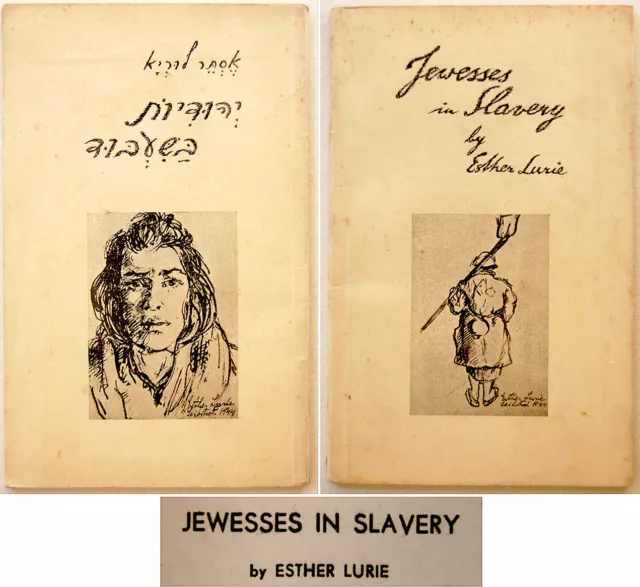
1945 Palestine JEWISH ART BOOK Holocaust CAMPS Kovno STUTTHOF Leibitz JUDAICA
£75.72 Buy It Now 12d 13h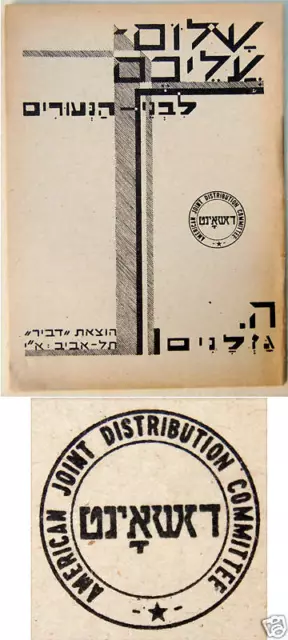
1945 Judaica HOLOCAUST Jewish JOINT book DP CAMP Hebrew SHOLEM ALEICHEM Israel
£56.19 Buy It Now 25d 21h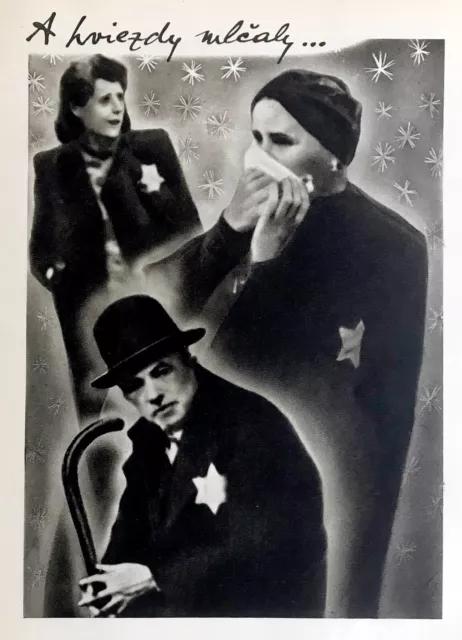
1946 Judaica HOLOCAUST Horrors JEWISH PHOTO BOOK Slovak JEWS Destruction JEWISH
£219.18 Buy It Now 25d 17h
1946 Palestine HOLOCAUST Horrors JEWISH PHOTO BOOK Israel JUDAICA Hebrew RARE
£195.27 Buy It Now 28d 14h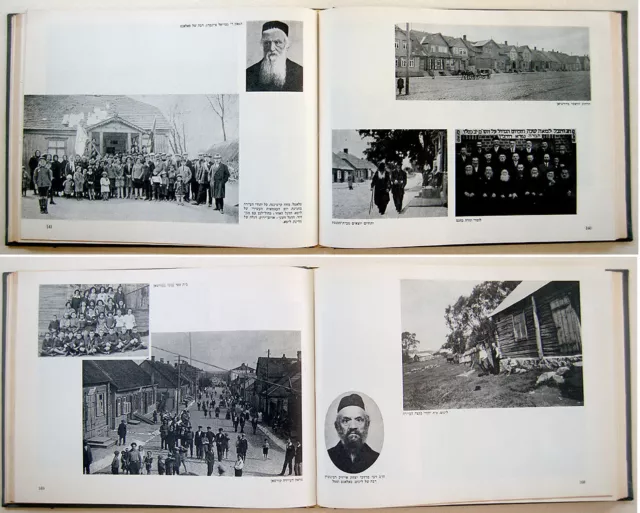
Jewish LITHUANIA Yizkor BOOK Judaica 360 PHOTOS ALBUM English HOLOCAUST Hebrew
£195.27 Buy It Now 18d 12h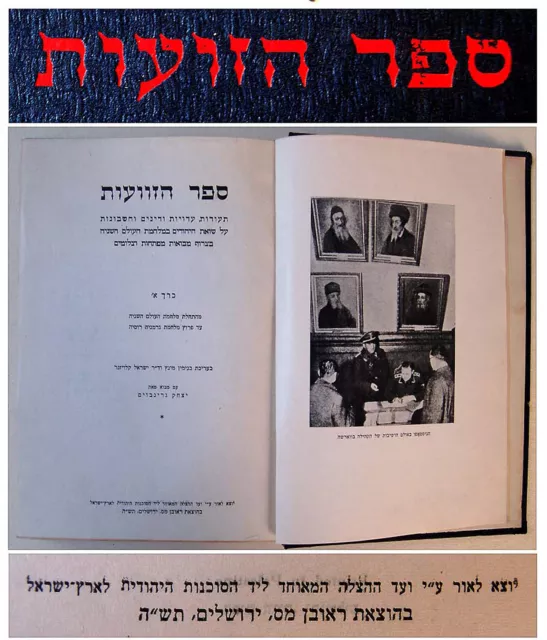
1945 Vaad Hatzalah JEWISH Hebrew HORRORS BOOK Photos HOLOCAUST ATROCITIES Israel
£108.63 Buy It Now 19d 19h
KOVNO GHETTO Yizkor JEWISH BOOK Holocaust PHOTOS MAPS DOCUMENT Lithuania JUDAICA
£71.17 Buy It Now 8d 19h
Geschichte Der Juden In Der Bukowina 2 Vol Jewish Yizkor Book Romania Holocaust
£238.30 Buy It Now 26d 15h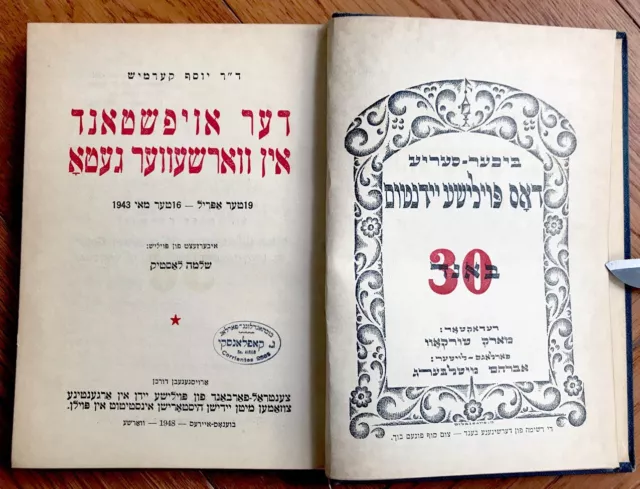
1948 Jewish WARSAW GHETTO UPRISE Judaica YIDDISH HOLOCAUST Horrors BOOK PHOTOS
£86.16 Buy It Now 11d 13h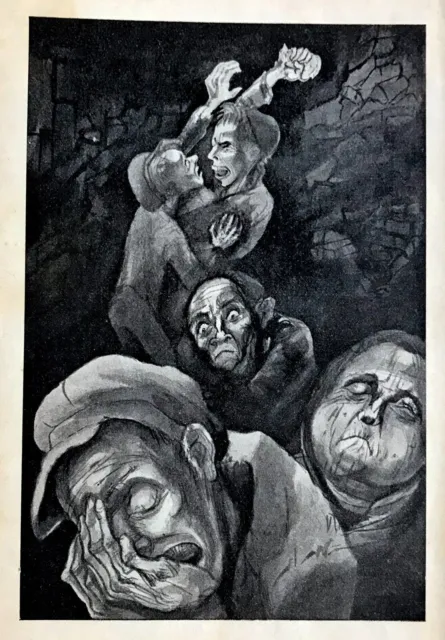
1946 HOLOCAUST ATROCITIES Jewish BOOK Hebrew LEA GRUNDIG Judaica WARSAW GHETTO
£219.18 Buy It Now 20d 12h
DOCUMENTARY Jewish HOLOCAUST HORRORS Judaica ART BOOK Israel GHETTO AUSCHWITZ
£86.16 Buy It Now 8d 18h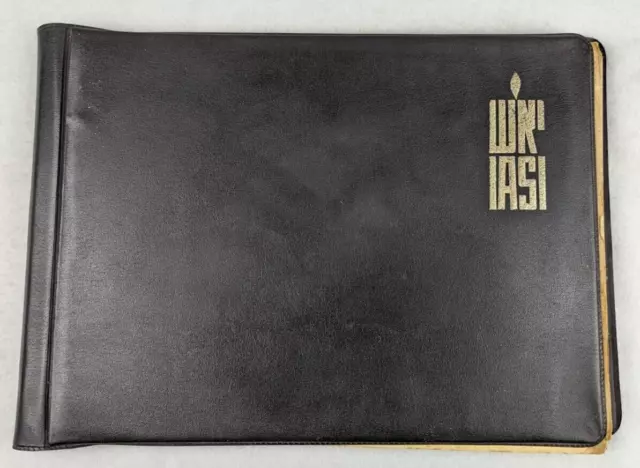
IASI ROMANIA MEMORIAL JEWISH BOOK HOLOCAUST POGROM 1941 Limited edition RUMANIA
£278.15 Buy It Now 15d 13h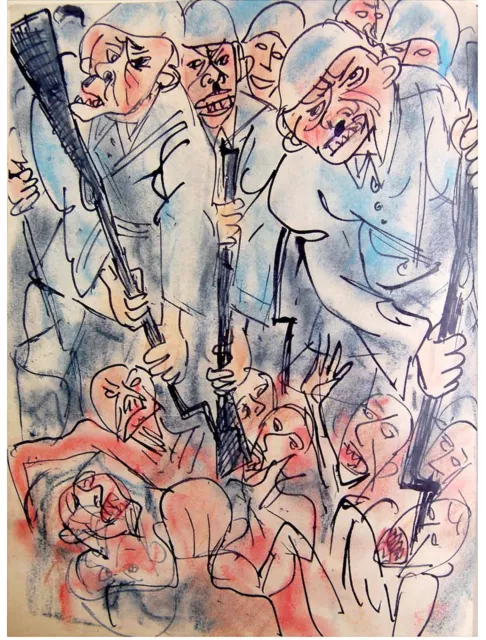
Signed MARCEL JANCO Jewish 1941 HOLOCAUST DRAWINGS Judaica ART BOOK Hebrew DADA
£115.57 Buy It Now 16d 22h
1944 Israel HOLOCAUST Lea GRUNDIG Hebrew JEWISH BOOK Children SURVIVORS Judaica
£71.17 Buy It Now 20d 10h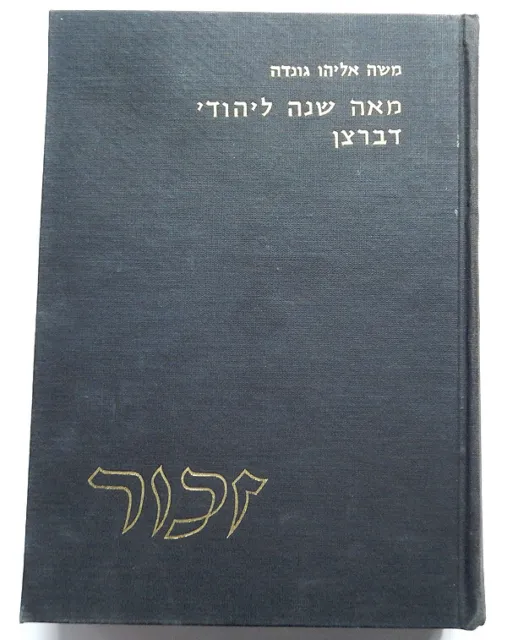
Debrecen Yizkor Memorial Jewish Book Holocaust Photos Hungary
£95.64 Buy It Now 14d 17h
SIGNED Jewish YIDDISH Poetry ART BOOK Polish HOLOCAUST Judaica SHTETL Israel
£93.65 Buy It Now 22d 12h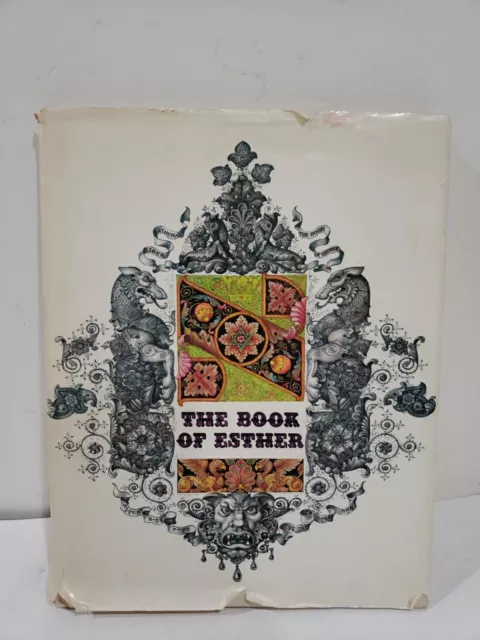
ARTHUR SZYK Jewish Megillat Megillah Book of ESTHER Judaica Post-Holocaust image
£143.46 Buy It Now 6d 3h
HOLOCAUST Ghetto WILNA Jewish SIGNED ART BOOK Judaica REVOLT Israel LITHUANIA
£115.57 Buy It Now 28d 10h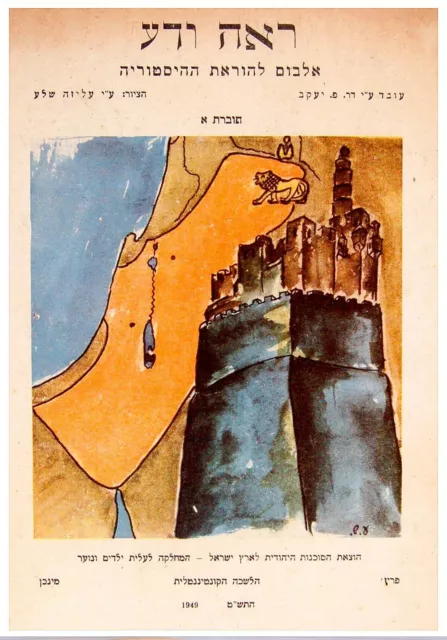
1949 HOLOCAUST Jewish CHILDREN Illus BIBLE BOOK DP Camp SURVIVORS Judaica HEBREW
£108.63 Buy It Now 30d 15h
Polish SURREALIST Rare ART BOOK Posters WW2 HOLOCAUST Horrors ATROCITIES Judaica
£115.57 Buy It Now 29d 17h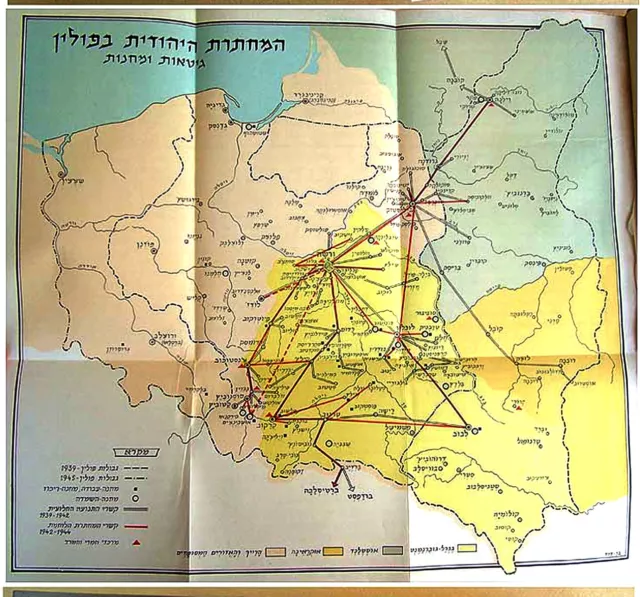
1954 Hebrew HOLOCAUST Ghetto WAR Jewish YIZKOR Book PHOTO Israel JUDAICA
£70.93 Buy It Now 30d 12h
Fernwald Dp Camp Jewish Haggadah Holocaust Survivors 1946 Judaica
£79.69 Buy It Now 18d 16h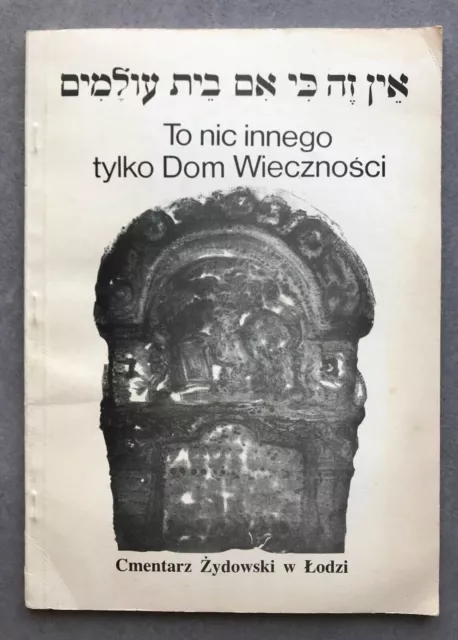
Jewish Cemetery Lodz Poland Judaica Holocaust 1940’s Book MANY PHOTOS
£78.90 Buy It Now 3d 22h
1944 Hebrew JEWISH BRIGADE Judaica ROME TOUR GUIDE BOOK MAP Photos HOLOCAUST WW2
£139.48 Buy It Now 17d 14h
Hannah Szenes Anikó Jewish Parachutists British Mandate WW2 Book Holocaust 1st
£119.55 Buy It Now 20d 14h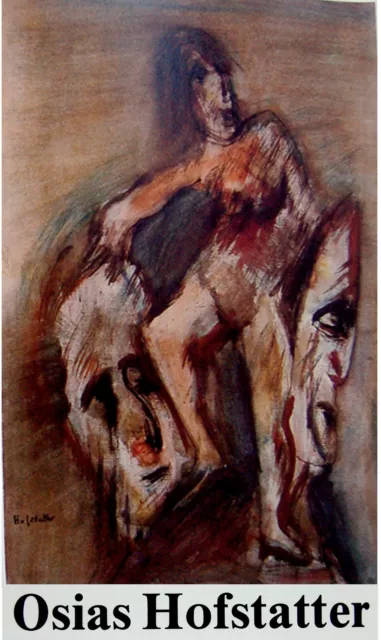
HOFSTATTER Hand SIGNED Jewish ART BOOK Judaica HOLOCAUST Hebrew ISRAEL Polish
£115.57 Buy It Now 17d 13h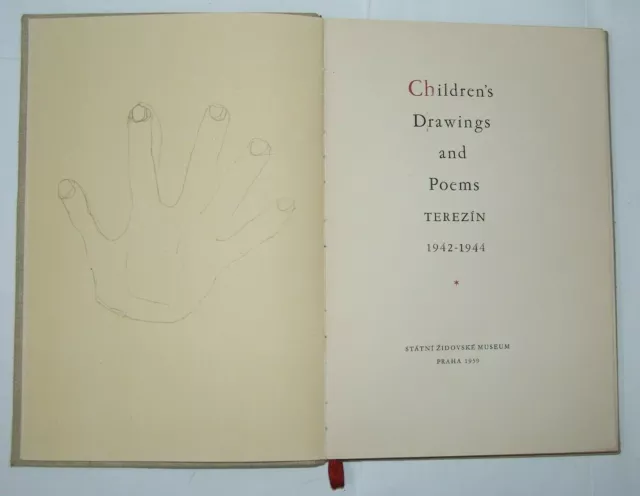
Jewish Judaica Childrens Drawings and Poems Terezin 1942 1944 book Holocaust WW2
£99.63 Buy It Now 19d 15h
1948 Jewish YIDDISH PHOTO BOOK Israel DP CAMPS Judaica HOLOCAUST Refugees RARE
£171.36 Buy It Now 9d 13h
